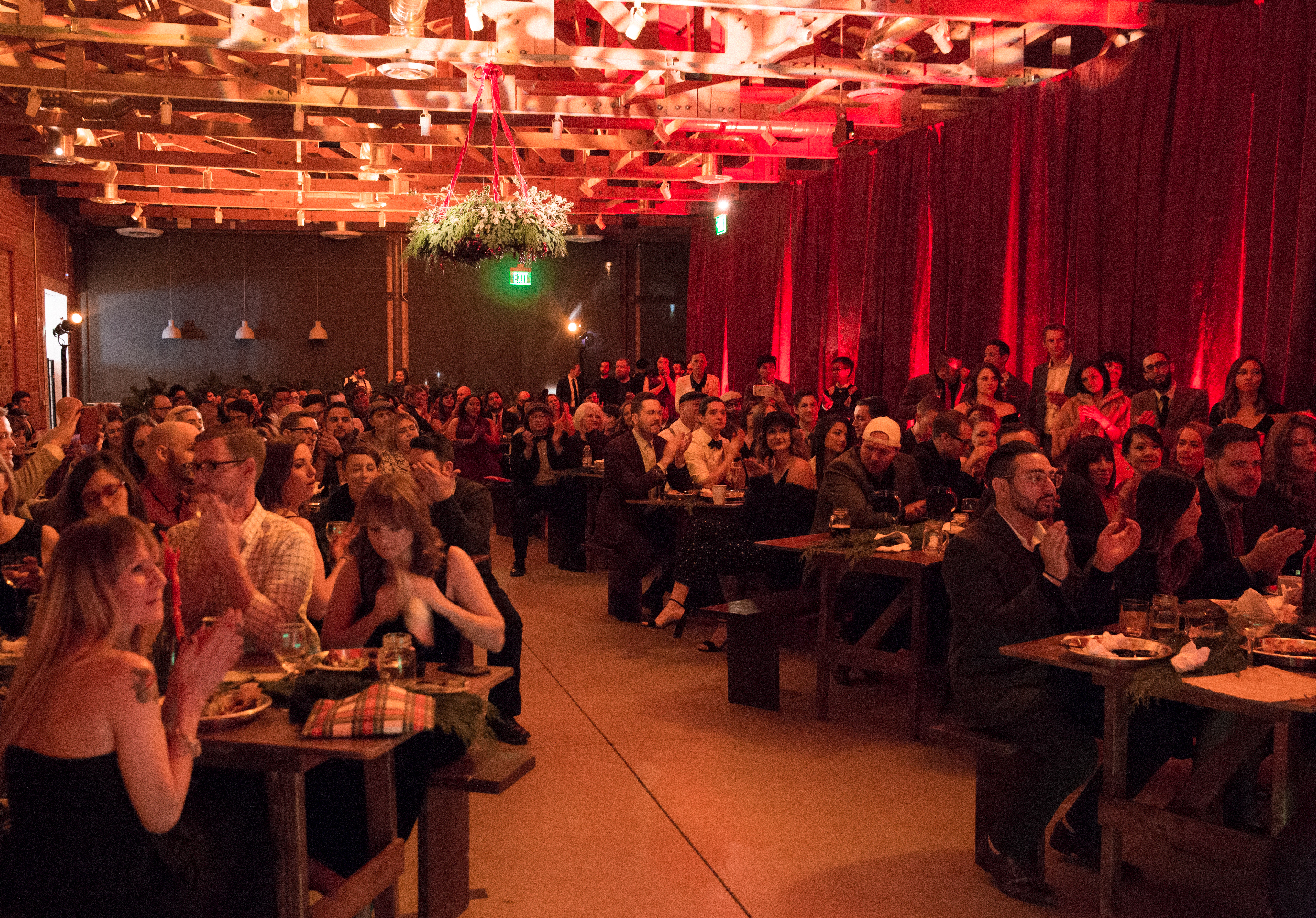When I was four years old, I figured out that I could combine my favorite color and my favorite animal into the best Halloween costume my little brain could imagine. I was a red elephant, complete with ears and a nose that I dutifully wore the entire night. Even though I was young, I knew I had made something unique out of two unlikely inspirations, and I was very happy with the result.
Fast forward to twenty-something-year-old me. I was a theater major looking for the next move post-college. Years of on-stage and back-of-house work had equipped me with knowledge about process, operations, teamwork, creativity, and show-biz. I realized that I could combine a fantastic career opportunity with a favorite passion to again potentially make something very cool.
When you put it on paper, nothing seems weirder than a theater geek joining Tuft & Needle (a start-up at the time) with the vision of creating a unique company culture. But it always made sense to me. The way I see it, our office is a stage and every day of our work week, with our motley cast of characters, is the show.
So how can you apply the principles of theater operations and production to the inner-workings of company culture?
Cast stars. You don’t cast a role just because they’ll look great in the costume. You want actors that can act, can bring the show together, won’t be divas and will inspire standing ovations. When you hire, consider the chemistry that will occur within the organization with this new cast member and consider the audience (your customers). Your team is on a mission to deliver a performance that will break the box-office, so don’t typecast and do hire carefully!

Set the stage. A frictionless workplace will ensure a smooth show a.k.a. work-day. Create an environment that is inspiring and encourages productivity. You do this by eliminating sensory pains such as artificial light, uncomfortable or stationary furniture, and distracting music or noises. Next, set props so the work day can keep moving. A printer that works, pens that are always in a certain spot, fresh dry-erase markers, and strong wifi are all examples of the tools that if missing or broken will throw off the day’s production.
Check your mics. Nothing will scream low-budget and unprofessional more than when the lights don’t work and the mics cut out. Same thing goes for a business. Slow computers and terrible video conferencing experiences will slow your show. The great thing about tech geeks (your IT guy) is that they are almost always the ones most passionate about pragmatically investing in what works best. If you want to see productivity boosted and frustration reduced, give your people the best tools for the job.
Nothing will scream low-budget and unprofessional more than when the lights don’t work and the mics cut out. Same thing goes for a business.
Hit your cues. You must communicate and you must own up to failure. While running lights for a musical performance in 2009, I stepped away from the control board. I had no back up in the booth, and sure enough as soon as I was gone the performers asked for the house lights so they could see their audience (an unusual but not uncommon request). When I got back, I had to apologize for making my crew look bad and for not delivering the experience everyone expected of us. Today, I’ll never forget what happened when I didn’t hit my cue. Even in business, whether you’re in an active role or a support role, we are all a part of the same show, and that show must go on.
Take a bow. In the theater industry, at the end of a show’s run, the crew throws a cast party. Even if the show didn’t go completely as planned, the ritual of celebrating the hard work put into the production is never missed. This practice is the hardest but perhaps the most important to remember in the corporate world. Maybe finances aren’t looking so hot this year, or that product you launched and spent a lot of time on fell flat: you still must make time to regularly celebrate the work and learnings that came along with those hard times. It’s easy to celebrate when things are going well, but your actors and crew need the morale boost the most when the days are long and the tension’s high. This balance is what helps prevent burn-out and keeps things in perspective as you get ready for the next show.

Go off book. A penchant for the dramatic will curate a unique place to work. If you want a unique culture, you have to stop doing the same old team building stuff—get creative and get weird. I was planning our company Spring Dinner, and I messaged our COO asking for an increase to my budget (we were bootstrapped by the way). He asked why, and I said “I want to rent a carousel”. Very surprised, he asked again why I would want to do that. “Because they will never forget it,” I said. Sure enough, three years later, the shared experience of wonder and delight that was riding in circles for hours on a miniature carousel, laughing and knowing full well that this was ridiculous, has contributed to the story that is Tuft & Needle’s culture.
I know we all wish there was a perfect script to follow when it comes to culture. No such script exists, which is probably good, because growing company cultures should be curated slowly and organically. The blessing and irony of not having a script to follow at Tuft & Needle is that it has allowed us to develop and exhibit a culture with a spectacular and unique personality. We let it have fun, let it take some risks. We didn’t restrict the creative artistic energy with too many policies right out the gate. Done well, this organizational freedom allows a company to develop a character that customers and employees admire and respect. An authentic culture like that makes you a very tough act to follow.


